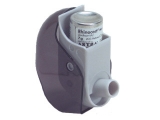Selling in a pharmacy
Are you looking to boost sales in your pharmacy? With fierce competition in the pharmaceutical industry, it's crucial to stay ahead of the game and maximize your revenue potential. Thankfully, there are several tips and strategies you can implement to ensure success. Whether you're a pharmacy owner or a sales representative, these proven techniques will help you attract and retain customers while increasing your bottom line.
1. Personalized customer service: In today's fast-paced world, customers appreciate personalized attention. Train your staff to provide exceptional customer service by answering questions, offering recommendations, and going above and beyond to meet individual needs. By making your customers feel valued and supported, you'll foster loyalty and encourage repeat business.
2. Promote over-the-counter products: While prescription medications may be the main focus of your pharmacy, don't underestimate the power of over-the-counter products. Highlight popular items, such as vitamins, pain relievers, and skincare products, to drive additional sales. Create eye-catching displays, offer informative brochures, and provide samples to entice customers and encourage impulse purchases.
3. Cross-selling and upselling: Maximize every sales opportunity by cross-selling related products or upselling higher-end options. Train your staff to identify customer needs and recommend additional items. For example, when someone purchases a cold and flu medication, suggest adding a cough syrup or throat lozenges to their basket. By offering relevant products, you'll increase the average transaction value and boost overall sales.
4. Collaborate with healthcare providers: Building strong relationships with local healthcare providers can significantly impact your sales. Reach out to doctors, dentists, and other medical professionals in your community and offer to be a trusted resource for medications and health-related products. By positioning yourself as a valuable partner, you'll gain referrals and access to a broader customer base.
5. Leverage digital marketing: In today's digital age, having a strong online presence is crucial for success. Invest in a user-friendly website with informative content, offer online ordering and prescription refills, and engage with customers through social media platforms. By embracing digital marketing, you'll increase your visibility, reach a wider audience, and attract tech-savvy customers.
"By implementing these tips and strategies, you'll position your pharmacy for success in a highly competitive market. Don't be afraid to think outside the box, embrace technology, and prioritize exceptional customer service. With the right approach, your pharmacy can thrive and become a trusted destination for all your customers' healthcare needs."
Understanding the pharmacy market
When it comes to selling products in a pharmacy, understanding the pharmacy market is key to success. The pharmacy market is a dynamic and highly competitive industry that is constantly evolving. It is important for sellers to stay informed about the latest trends and changes in order to effectively position and market their products.
Research is a crucial step in understanding the pharmacy market. Sellers should conduct extensive research to identify the needs and preferences of the target audience. This includes analyzing customer demographics, purchasing habits, and current market trends. By understanding the specific needs of the target audience, sellers can tailor their products and marketing strategies to meet these needs.
Competition
Competition is fierce in the pharmacy market, with numerous brands and products vying for shelf space and customer attention. It is important for sellers to differentiate their products from competitors by highlighting unique features and benefits. This can be done through effective branding, packaging, and messaging that resonates with the target audience.
Additionally, it is important for sellers to build strong relationships with pharmacy owners and staff. By establishing trust and rapport, sellers can gain valuable insights and recommendations that can help boost their sales. Maintaining open lines of communication and providing excellent customer service are also essential for success in the pharmacy market.
Regulations and Compliance
The pharmacy market is heavily regulated, with strict rules and guidelines that sellers must adhere to. It is important for sellers to stay up-to-date with the latest regulations and ensure that their products comply with all necessary requirements. Failure to comply with regulations can result in fines, product recalls, and damage to a seller's reputation.
Finally, building strong relationships with healthcare professionals, such as doctors and pharmacists, can also be beneficial in the pharmacy market. These professionals often play a key role in recommending and prescribing products to their patients. By establishing trust and providing educational resources, sellers can increase their chances of gaining recommendations from healthcare professionals.
Targeting the right audience
In order to have a successful selling strategy in a pharmacy, it is crucial to target the right audience. Understanding the needs and preferences of your target customers will allow you to tailor your products and services to meet their requirements, increasing the chances of making a sale.
Identify your target demographic: Begin by analyzing the demographics of the local area around your pharmacy. Consider factors such as age, gender, and income level. This information will help you determine who your target audience is and how to reach them effectively.
Segment your market: Once you have identified your target demographic, it is essential to segment your market further. Look for common characteristics and behaviors among your target audience that will allow you to create targeted marketing messages and promotions.
Meet their needs: Understanding the specific needs and preferences of your target audience is key. Identify the types of products and services that are most in demand among your target customers and ensure that you have them readily available in your pharmacy. This could include items such as over-the-counter medication, personal care products, or specialized health supplements.
Create a personalized shopping experience: Tailor your pharmacy's atmosphere and customer service to appeal to your target audience. For example, if your target demographic is older adults, create a comfortable and welcoming environment with seating areas and clear signage. Additionally, train your staff to provide excellent customer service and personalized recommendations based on individual needs.
Communicate effectively: Utilize various communication channels to reach your target audience and keep them informed about your products and services. This could include email newsletters, social media platforms, and targeted advertising campaigns. Be sure to tailor your messaging to resonate with your audience and highlight the benefits of your products or services.
Monitor and adapt: Continuously monitor the effectiveness of your selling strategies and make adjustments as needed. Analyze sales data and customer feedback to identify areas of improvement and adapt your approach accordingly. By staying in tune with your target audience, you can ensure that your pharmacy remains competitive and successful.
Creating a compelling product display
Highlight the features and benefits
When creating a product display in your pharmacy, it's important to highlight the key features and benefits of the items you are selling. Use clear and concise language to explain how the product can improve the customer's health or well-being. Whether it's a medication, a skincare product, or a supplement, make sure to emphasize why it's a must-have item.
Organize products effectively
An organized product display can make a big difference in attracting customers' attention. Consider arranging items according to their categories or health concerns, making it easier for customers to find what they need. Use shelves, tables, or display cases to showcase the products in an attractive and easily accessible manner.
Use eye-catching signage and labels
Clear signage and labels can help draw customers' attention to specific products or promotions. Use bold and legible fonts, along with vibrant colors, to make the signage stand out. Include key information such as the product's name, price, and any applicable discounts or special offers. This will entice customers to take a closer look and learn more about the product.
Create interactive displays
Engage customers with interactive displays that allow them to touch, try, or sample the products. This can include providing testers for skincare items, offering product demonstrations, or arranging a "try before you buy" station. By encouraging customers to interact with the products, you increase the chances of making a sale and building customer loyalty.
Regularly update and refresh the display
Keep your product display fresh and appealing by regularly updating it and introducing new items or promotions. Change the layout, add seasonal decorations, or feature new products to keep customers interested and coming back for more. By regularly refreshing the display, you create a sense of excitement and encourage customers to explore what's new in your pharmacy.
Effective marketing techniques
1. Social media advertising
In today's digital age, social media platforms have become powerful tools for marketing. Engaging with the target audience through platforms like Instagram, Facebook, and Twitter can help create brand awareness and attract new customers. By creating compelling content, using relevant hashtags, and interacting with potential customers, pharmacies can effectively promote their products and services.
2. Loyalty programs
Implementing a loyalty program can be a great way to retain customers and encourage repeat purchases. By offering exclusive discounts, special promotions, or rewards for frequent purchases, pharmacies can incentivize customers to choose their store over competitors. Loyalty programs can also be used to collect customer data, which can be used for targeted marketing campaigns.
3. Educational events and workshops
Organizing educational events and workshops can help pharmacies establish themselves as trusted sources of health information. By hosting events on topics like medication management, healthy living, or disease prevention, pharmacies can attract customers who are seeking knowledge and solutions. These events can also generate word-of-mouth marketing and help build long-term customer relationships.
4. Online advertising and search engine optimization (SEO)
Utilizing online advertising platforms like Google Ads or Bing Ads can help pharmacies reach a wider audience. By targeting keywords related to their products and services, pharmacies can ensure that their website appears on the first page of search engine results. Implementing SEO strategies, such as optimizing website content and building backlinks, can further improve a pharmacy's online visibility and drive more organic traffic.
5. Collaborations with healthcare professionals
Building partnerships and collaborations with healthcare professionals, such as doctors or nutritionists, can help pharmacies enhance their credibility and reach. By offering educational materials or hosting joint events, pharmacies can tap into the existing patient base of healthcare professionals and attract new customers. These collaborations can also provide opportunities for cross-promotion and referral programs.
Building relationships with pharmacy staff
1. Be friendly and approachable
When interacting with pharmacy staff, it's important to be friendly and approachable. Smile, make eye contact, and greet them politely. This will help create a positive first impression and make them more willing to engage with you.
2. Show interest in their work
Take the time to ask pharmacy staff about their roles and responsibilities. Show genuine interest in what they do and ask questions to learn more. This will not only help you build a rapport with them, but also give you a better understanding of their needs and challenges.
3. Offer assistance and support
Pharmacy staff often have a lot on their plate, so offering assistance and support can go a long way in building relationships. This could involve helping them with tasks, offering to cover their shifts, or providing useful resources or information. By being helpful, you'll gain their trust and respect.
4. Provide product knowledge and training
As a seller, it's important to have a strong understanding of the products you're selling. Be prepared to share your knowledge with pharmacy staff and provide training sessions if necessary. This will not only help them feel more confident in recommending your products to customers, but also enhance their trust in you as a reliable resource.
5. Stay in touch and keep them updated
Building relationships is an ongoing process, so it's important to stay in touch with pharmacy staff and keep them updated on any new products, promotions, or industry news. This could involve sending regular newsletters, organizing educational events, or simply checking in with them regularly. By staying connected, you'll strengthen your relationships and become their go-to source for information and support.
Maintaining inventory and stock management
Accurate tracking of products
Effective inventory management is crucial for a successful pharmacy business. By accurately tracking your products and maintaining a detailed record of what is in stock, you can ensure that you always have the necessary items available for your customers. This includes monitoring expiration dates, tracking the quantity of each product, and implementing a system to easily identify and locate items on the shelves.
Efficient ordering and restocking
To maintain a well-stocked pharmacy, it is essential to have an efficient ordering and restocking process in place. This involves analyzing sales trends, monitoring inventory levels, and proactively placing orders to replenish stock. By staying ahead of demand and minimizing stockouts, you can provide your customers with the products they need, when they need them.
Organizing products effectively
Proper organization of products is key to efficient inventory management. By categorizing items logically and ensuring clear labeling, you can streamline the process of locating and retrieving products. This not only saves time but also reduces the risk of errors. Consider utilizing shelving systems, bins, and labels to keep your stock organized and easily accessible.
Implementing inventory control measures
Implementing inventory control measures can help prevent theft, loss, and shrinkage. By conducting regular stock audits, performing checks on incoming and outgoing stock, and implementing security measures such as surveillance cameras and restricted access to storage areas, you can mitigate the risk of inventory discrepancies and protect your business's bottom line.
Utilizing technology and software
Utilizing technology and software can greatly enhance your inventory management processes. There are numerous pharmacy-specific software solutions available that can help automate tasks such as tracking stock levels, generating purchase orders, and analyzing sales data. By leveraging these tools, you can streamline your operations and make more informed decisions to optimize your inventory management.
Collaborating with suppliers
Building strong relationships with your suppliers is crucial for maintaining a smooth inventory and stock management system. Regular communication and collaboration can aid in forecasting demand, negotiating favorable terms, and resolving any issues that may arise. By working closely with your suppliers, you can ensure a reliable supply chain and minimize disruptions to your inventory management.
Follow us on Twitter @Pharmaceuticals #Pharmacy
Subscribe on YouTube @PharmaceuticalsYouTube





Be the first to comment on "Selling in a pharmacy"